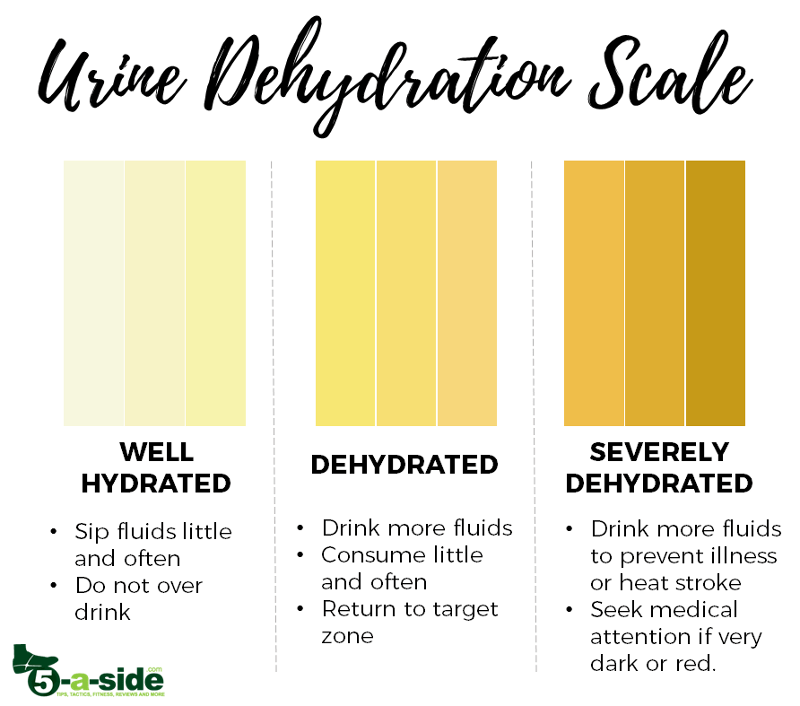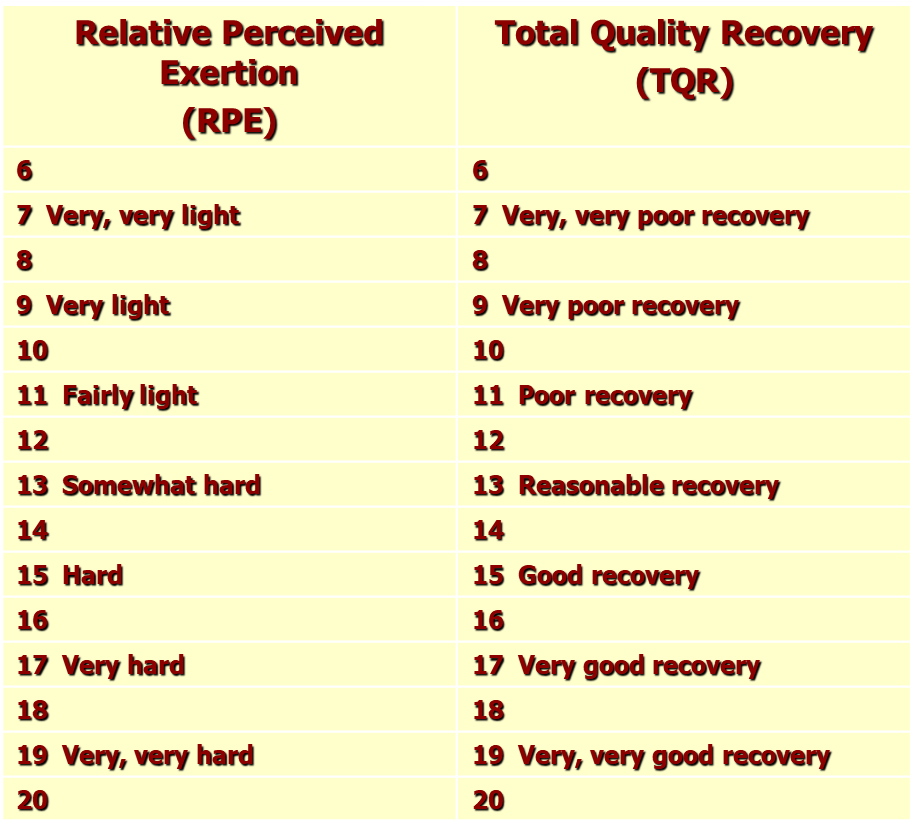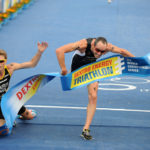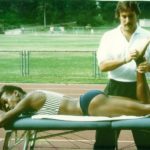
By Shelby Stoner, PHASE IV Exercise Physiologist
It seems like you’re doing all of the right things, you’re training 4+ days per week, incorporating a variety of workouts, working in your Long Slow Distance, eating well (at least to the best of your ability), yet progress has stalled and workouts have become stale. So what’s missing?….
Recovery. It’s a simple concept, yet often overlooked and not properly implemented into your routine. Sure, you drink protein shakes after your activities or foam roll every so often, but in reality that’s not enough.
Training for success is a balance; a balance between achieving optimal performance or reaching your goal weight while avoiding the negative consequences of overtraining and the staleness conundrum. Unfortunately, sometimes it’s hard to recognize when recovery is needed as us highly motivated individuals usually respond to a plateau or drop in performance with increases in our training load without fully recognizing the signs of overtraining and overreaching. Consequently, it’s actually telling us that the training related factor leading to negative states is a failure to include adequate recovery in the training regimen.
It is apparent that in any training program there is a need for formally structured recovery processes. It is especially important to select appropriate recovery methods that are matched against the training stimulus. That is, the harder the workout, the greater need for recovery efforts. While recovery efforts cover a wide variety of modalities and tactics, some of the most common include active recovery (i.e. low intensity workout), massage, foam rolling, ice, and most importantly sleep! Among these different approaches towards recovery, 4 main categories have been identified: Nutrition and hydration, sleep and rest, relaxation and emotional support, and stretching and active rest.
1. Nutrition and Hydration
HOW MUCH you eat and WHAT you eat are major factors in the recovery process. Digestion is not only regulated by what you eat, it is regulated by what is taken in and assimilated. A poor diet with an insufficient caloric and fluid intake will decrease the capacity to tolerate physiological stress, a.k.a exercise! That being said, hitting your daily caloric requirements is important with the quality of those calories being even more important. Rather than reaching for a bagel in the morning, opt for organic steel cut oats with fresh fruit or nut butter. Organic oats offer a much healthier and less processed form of carbohydrates especially on days where your exercise intensity is higher. Fresh fruits also provide a quick source of natural, simple carbohydrates that are easily digestible along with the healthy fats offered in nut butters.
In addition, fluid intake is a necessity for maintaining performance capacity, weight loss, and overall health. Aside from keeping you hydrated, adequate water intake helps flush out toxins that build up in the body especially after exercise. It is imperative to replenish water stores that are lost from sweat and environmental factors as insufficient fluid intake will inhibit performance by allowing less glycogen to be stored in the muscle (we want to keep these stores high!). For starters, try and consume at least 64-80oz of warm/room temperature water daily and even more on exercise days!

2. Sleep and Rest
The most frequently mentioned factor for enhancing recovery is the most obvious one, sleep! When you think about it, sleep is your body’s natural mode of recovery! Not only do we need recovery from exercise, we need recovery from daily lifestyle and activities as well. This is why sleep is so important for improving day to day function, performance, and promoting weight loss. Sleep gives you more than just rest; it recharges your “battery,” a.k.a nervous system and replenishes your energy stores. Naturally the deeper and better you sleep, the better you reload. Not to forget, your hormones are working while you’re sleeping. Good sleep helps bring down harmful cortisol levels that accumulate as a result of stress and exercise. In a stressed-out state, cortisol levels are high which can hurt performance and goals over a long period of time. It’s important to help these levels return to “baseline” as excess cortisol promotes fat storage and is a contributing factor to the overtraining syndrome.
One of the best ways to ensure you’re getting GOOD sleep each night is to create a ritual. Lie down, meditate, utilize positive self-talk, read a book, or talk to another human being (Or if you’re like me, your dogs); all of these things can be relaxing and help slow your heart rate preparing you for a good night’s sleep.
3. Relaxation and Emotional Support
Regeneration strategies such as relaxation therapy, counselling, and massage have increasingly gained popularity with athletes especially in Eastern Europe as ways to recover from daily life and exercise. Eliminating or at least minimizing common daily stressors whether the source is occupational, financial, social, etc. is another strategy commonly used by sport psychologists to promote mental and physical well-being.
Relaxation techniques such as massage, foam rolling and myofascial release are also important to incorporate as proactive recovery interventions. These specific techniques help target problematic areas and promote blood flow and oxygen to the muscle to enhance the recovery process.
4. Stretching and Active Rest / Recovery
Stretching has effects similar to that of massage as it increases blood flow through the muscle. Stretching should be incorporated into your daily routine to help promote good posture and flexibility, as well as before and after exercise in order to help prepare the body for activity and prevent injury. Stretching in the morning after you wake and before bed is also beneficial especially in areas that are tight or underdeveloped.
While sometimes it may seem like a great idea to lounge on the couch after a long or hard workout, it actually may be in your favor to get up and moving. This is what we refer to as active rest, or active recovery. Active recovery is defined as low intensity exercise with the purpose of getting blood flow to your muscles and helping them recover. So while watching Netflix or taking a nap seems like a great idea, doing something more active like taking a walk, an easy swim, or hopping on an elliptical may actually speed up the recovery process. How do you know how hard to go? Essentially, an active recovery workout should keep you below a 4 on a 1-10 rating of perceived effort scale (see scale below). An active recovery day should feel light and rejuvenating, and serve as a psychological break. In this way, exercise is used as a therapeutic tool. Ultimately, not EVERY recovery day should be an active one, but don’t discount them altogether. Make sure you have at least one FULL recovery day where yes, Netflix and napping is allowed, and incorporate active recovery in the rest of the week.
Take Home Message
Just as you may track your calories or monitor heart rate during exercise, it’s helpful to keep tabs on your recovery. Even asking yourself simple questions like “How do I feel today?” or “Am I sore—is my soreness symmetrical?” and “How well did I sleep?” can expose simple measures of fatigue.
Most importantly, pay attention to your body. Are your feet starting to get a little bit heavy? Are your feet hitting the ground harder? Is that knee acting up more frequently? Nobody knows your body like you do. If you’re overly tired, call it quits; better you get the rest you need than hurt yourself.
In order to help keep track of recovery and prevent harmful overtraining, try using the Total Quality Recovery (TQR) process or the Wellbeing Quiz below!
…
Total Quality Recovery (TQR) Assessment Process
- Evaluate your last 24hr training period.
- Determine your score for each category:
- Nutrition
- Sleep and Rest
- Relaxation and Emotional Support
- Stretching and Cool-down
- Nutrition (10 points)
- Breakfast – 1 point
- Lunch – 2 points
- Dinner – 2 points
- Snacks between meals – 1 point
- (This assumes quality, healthy balanced meals)
- Adequate hydration
- throughout the day – 2 points
- during/post workouts – 2 points
- (Environmental factors will effect greatly how much is an adequate intake of fluids)
- Sleep and Rest (4 points)
- Good night of quality sleep (7-8 hours) – 4 points
- (Quality of sleep is measured using individual perception)
- Relaxation and Emotional Support (3 points)
- Full mental and muscular relaxation after training – 2 point
- Maintaining a relaxed state throughout the day, finding ways to reduce stress – 1 point
- Here the goal is to use a variety of relaxation techniques (breathing, massage, etc.).
- Stretching and Cool Down (3 points)
- Proper cool down after each training period – 2 points
- Stretching all the exercised muscle groups – 1 point
- Tally your points. A total of 20 points are available and a score of less than 13 points indicates that recovery from training is incomplete.

…
Wellbeing Quiz
Assess your state of training and recovery by visiting these statements each morning. See where you are excelling in the recovery process or where you may need some work.- Assess yourself each morning against the following six questions/statements:
- I slept well last night
- I am looking forward to today’s workout
- I am optimistic about my future performance
- I feel vigorous and energetic
- My appetite is great
- I have little muscle soreness
- Rate each statement on the following scale:
- 1 – Strongly disagree
- 2 – Disagree
- 3 – Neutral
- 4 – Agree
- 5 – Strongly agree
- If your score is 20 or above then you have probably recovered enough to continue with the training program. If your score is below 20, you may want to consider rest or an easy workout (active recovery) until your score rises again.








